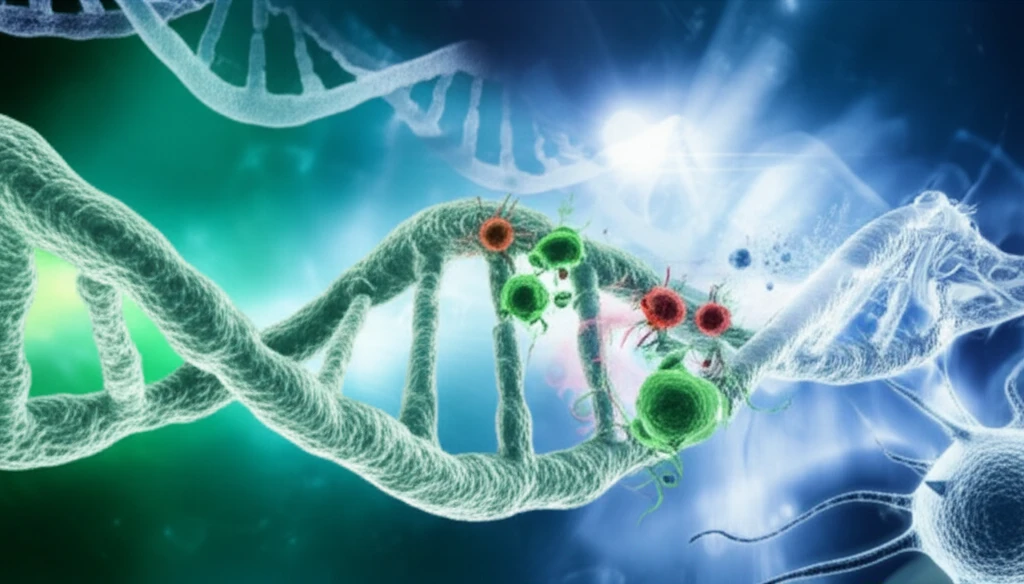
DNA Damage and Cancer Drugs: Can We Turn Cellular Weakness Into Strength?
"New research explores how common cancer drugs induce DNA damage and genome instability, potentially offering new avenues for targeted cancer therapies."
Cancer treatment often relies on small molecules that disrupt DNA metabolism. Trabectedin (ET743), initially derived from a sea squirt, and its synthetic derivative lurbinectedin (PM01183), are examples of such drugs. These drugs are used to treat advanced soft tissue sarcoma and platinum-sensitive ovarian cancer.
One of the primary mechanisms of these drugs involves inhibiting transcription—the process by which DNA is read to create RNA. They preferentially bind to specific DNA sequences and can prevent transcription factors from binding to chromatin. Moreover, they induce the degradation of RNA polymerase II (RNAPII), a critical enzyme in transcription.
Cancer cells are often associated with genome instability. R-loops, structures consisting of an RNA-DNA hybrid and displaced single-stranded DNA, can be a significant source of this instability. While R-loops can play physiological roles, they can also lead to DNA damage and replication stress, linking them to neurodegenerative disorders and cancer.
How Trabectedin and Lurbinectedin Affect DNA and Genome Stability

Recent research has shown that trabectedin and lurbinectedin cause transcription-dependent replication stress and genome instability. These drugs induce RNA-DNA hybrid-dependent DNA damage in HeLa cells, leading to replication impairment. High levels of R-loops increase the sensitivity of cells to trabectedin, indicating a critical role for these structures in the cellular response to the drugs.
- R-loops and DNA Damage: Drugs like trabectedin and lurbinectedin induce DNA damage and genome instability by affecting RNA-DNA hybrids.
- Transcription Dependency: The drugs' impact on DNA is closely linked to transcription processes.
- FANCD2 Foci Accumulation: Trabectedin leads to increased FANCD2 foci, which are suppressed by RNase H1 overexpression.
- Evolutionary Conservation: The effects of these drugs are seen in both human and yeast cells, indicating an evolutionarily conserved mechanism.
Implications for Future Cancer Therapies
This research provides a new understanding of how trabectedin and lurbinectedin work, linking their activity to transcription and R-loop formation. These insights suggest that targeting R-loops could be a viable strategy for developing new anticancer agents. Given that R-loops are present throughout the genome, drugs that can effectively act on these structures may enhance their therapeutic efficacy, opening new possibilities for treating specific cancers.
